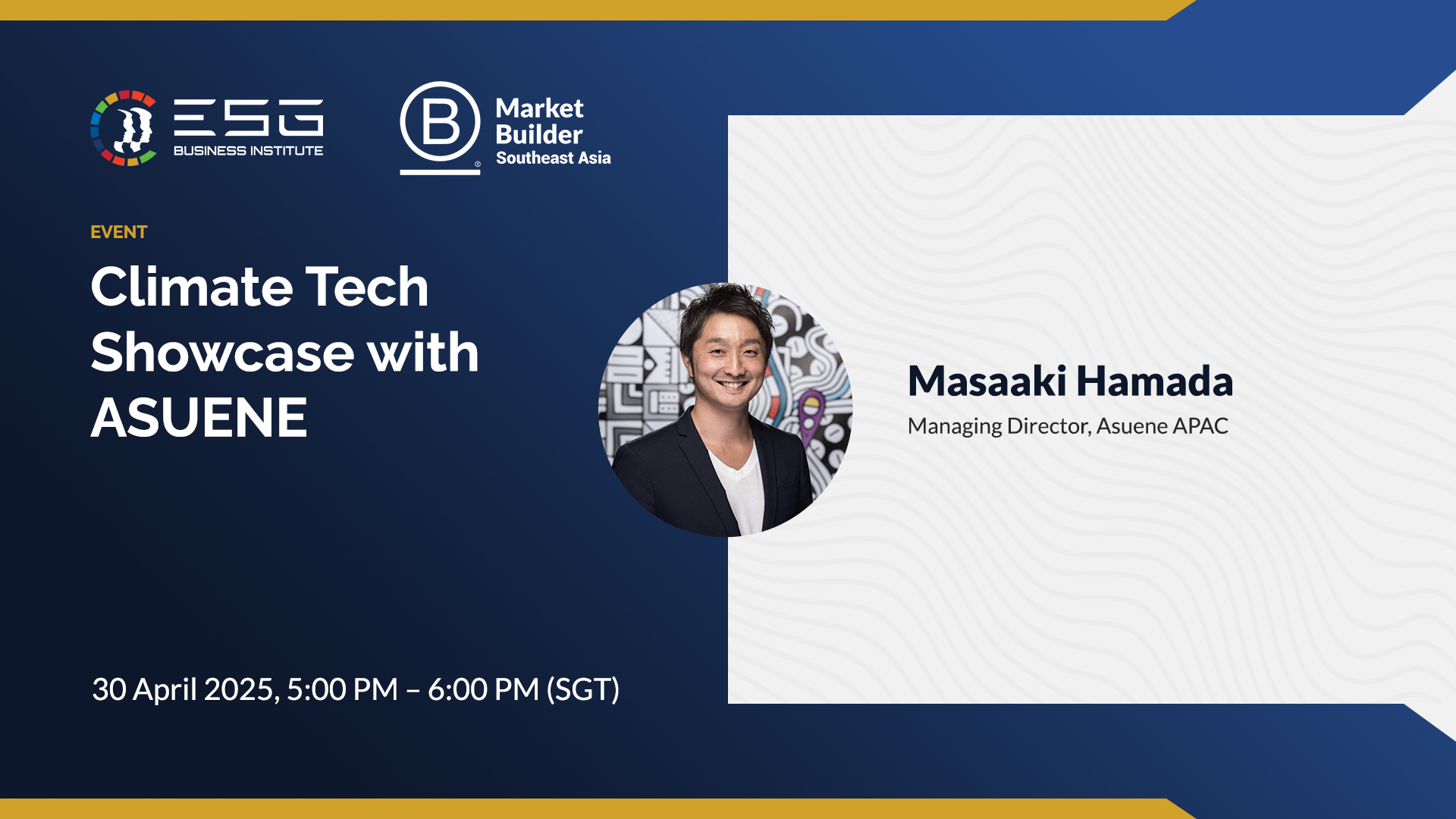Written by Leela Julong
26 May 2025

Carbon accounting has been regarded as a compliance burden—complex, costly, and confined to multinational corporations. However, in a groundbreaking ESG Business Institute webinar, Mr. Masaaki Hamada, APAC Head of Japan’s leading carbon platform ASUENE Inc., challenged this myth, revealing how technology is democratizing sustainability for businesses of all sizes.
With over 10,000 clients globally and recognition in TIME Magazine’s “World’s Top GreenTech Companies 2025”—the only carbon accounting platform company from Japan—ASUENE offers one of the leading carbon accounting software solutions in Asia. ASUENE’s story isn’t just about metrics—it’s about turning carbon transparency into a competitive advantage.
Key Motivations for Carbon Reporting
“Many still ask: Why measure emissions if it’s not mandatory?” Masaaki noted. “But sustainability isn’t just about compliance—it’s about future-proofing your business.”
Masaaki highlighted three main factors driving demand for carbon reporting:
1. Regulatory Tsunami: Companies are increasingly required by law or regulation (e.g., national mandates, CSRD in Europe, Singapore's 2027 reporting rules) to measure and disclose their carbon emissions.
2. Supply Chain Domino Effect: Large multinational corporations require their suppliers, including SMEs, to report emissions to meet their own climate targets.
3. Financial and Strategic Benefits: Carbon reporting can lead to better financing terms (e.g., sustainability-linked loans) and serve as a competitive edge for branding and customer trust.
ASUENE’s Game-Changing Approach
1. From Spreadsheets to AI-Powered Insights
Traditional carbon accounting relies on error-prone Excel files. ASUENE’s cloud platform automates:
· Multi-country emission factors (critical for Asia’s patchwork of regulations).
· Scope 3 supply chain tracking, with real-time supplier dashboards.
· Audit-ready reports, prepping firms for Singapore’s 2027 assurance requirements.
Case Study:
· Sony streamlined Scope 3 reporting by using the ASUENE platform to collect data from 400+ suppliers, cutting manual work by up to 70% and improving accuracy and response rates.
· Nippon Express cut logistics emissions by 90% after identifying inefficiencies through ASUENE’s granular data.
2. SME-Friendly Solutions
“You don’t need an ESG team to start,” Masaaki emphasized. ASUENE’s free templates and pay-as-you-go pilots help small businesses:
· Benchmark Scope 1–2 emissions in weeks.
· Qualify for government grants (e.g., Malaysia’s MIDA subsidies).
3. Turning Data into Brand Power
One client—an EV battery maker—rebranded as a “Sustainable Battery Pioneer” after showcasing emissions reductions on LinkedIn. “Sustainability isn’t a cost center,” Masaaki said. “It’s your best marketing tool.”
Debunking Carbon Accounting Myths
· Myth: “Only big corporations need this.”
Reality: SMEs face growing pressure from banks, investors, and export partners.
· Myth: “Excel is enough.”
Reality: Scope 3’s 15 categories require automation—especially for audits.
· Myth: “It’s too expensive.”
Reality: Grants (like Singapore’s productivity funds) can cover 50–70% of software costs.
The Road Ahead
Masaaki closed with a call to action:
- Start small: Track electricity/fuel use first.
- Leverage partnerships: ASUENE collaborates with ESG BI to offer member discounts.
- Think global: “Your emissions today could be a European client’s dealbreaker tomorrow.”
Final Takeaway
Carbon accounting is no longer optional—it’s the currency of trust in modern business. With pioneers like ASUENE simplifying the journey, every company can turn sustainability from a challenge into its strongest asset.
“Don’t wait for regulations to force your hand,” Masaaki urged. “Lead now—and reap the rewards.”
“The best time to measure your footprint was yesterday. The second-best time is today.”
— Masaaki Hamada, ASUENE
